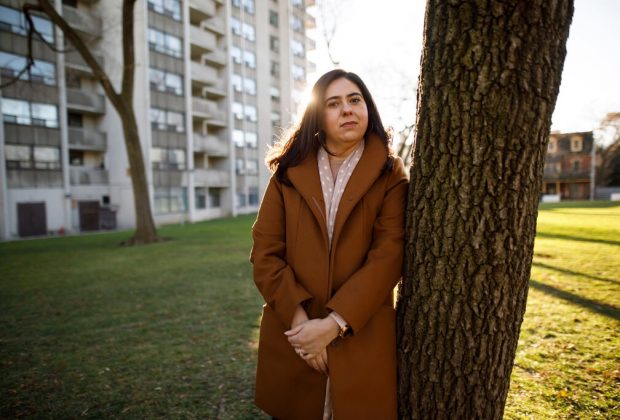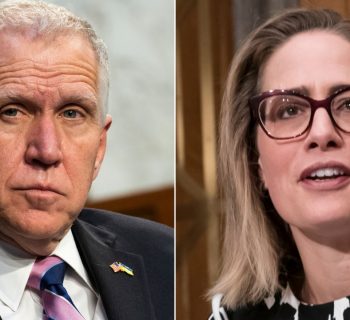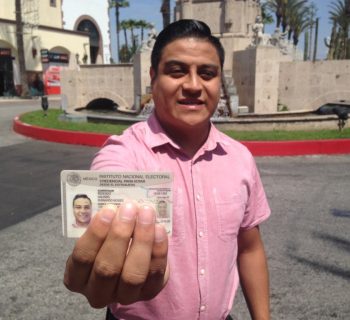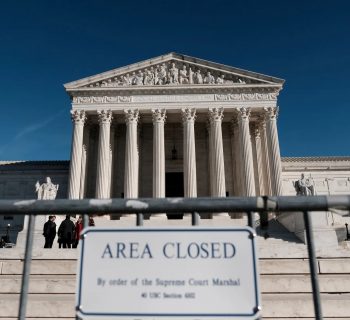A judge ordered the Trump administration to reinstate protections for young immigrants brought to the country as children. But their status remains precarious.
By Miriam Jordan and
LOS ANGELES — Despite being a college graduate, Maria Fernanda Madrigal Delgado had no choice in 2011 but to clean buildings and flip burgers in fast-food joints for cash because she was not eligible to work in the United States. She had grown up undocumented in Southern California after being brought to the country as a child from Costa Rica.
In 2012, after President Barack Obama unveiled Deferred Action for Childhood Arrivals, a program that shielded hundreds of thousands of young undocumented immigrants from deportation and allowed them to work, she got a job as a legal assistant. In May, at 31, she will graduate from law school in San Diego.
Yet almost from the moment DACA was created, it has been dogged by legal challenges, which have kept Ms. Madrigal and other so-called Dreamers on tenterhooks. Soon after President Trump took office in 2017, he canceled the program. The Supreme Court ruled in June that he had done so improperly, but the administration erected new roadblocks. “It’s literally like we’re in a Ping-Pong game,” Ms. Madrigal said. “They’re playing with our lives.”
On Friday, a federal judge ruled in favor of DACA recipients, ordering full reinstatement of the program and opening it to new applicants. But Ms. Madrigal isn’t celebrating. “I am aware this is not the end,” she said. “There can be another challenge. We need to get something that is more permanent.”
For undocumented young adults who were brought to the United States as children, Friday’s court ruling was a milestone — an opportunity to win security after years of whiplash, as well as facing the possibility of removal.
Yet their future, most realize, ultimately remains uncertain. For years, DACA has been a policy roller coaster, with court rulings and administration actions every few months alternately canceling, reinstating and partially rolling back the program.
As President-elect Joseph R. Biden Jr. takes office, he faces enormous pressure to do what so many of his predecessors could not: push through a legislative solution that once and for all addresses the fate of the Dreamers.

Arlette Morales missed out on DACA acceptance twice, but after Friday’s court ruling, she said she would apply again.Credit...Rosem Morton for The New York Times
“DACA recipients cannot feel safe yet, for a variety of reasons,” said Stephen Yale-Loehr, a professor of immigration law at Cornell Law School. “The only true solution for DACA recipients is legislation offering them a path to legalization. Given the polarization in Congress, that seems difficult to achieve.”
In his decision on Friday, Judge Nicholas G. Garaufis of the U.S. District Court in Brooklyn reversed a memorandum issued in the summer by Chad Wolf, the acting secretary of homeland security, that restricted the program’s protections to people who had already enrolled. As many as 300,000 new applicants now can participate, if the judge’s ruling stands.
The Department of Homeland Security attacked the decision on Saturday, saying it would abide by the ruling while it worked with the Justice Department on an appeal.
“D.H.S. wholly disagrees with this decision by yet another activist judge acting from his own policy preferences,” Chase Jennings, a department spokesman, said, describing the judge’s ruling as “clearly not sound law or logic.”
Unless Congress acts for the Dreamers, DACA is likely to be entangled in litigation and legal doubt for a while.
“Unfortunately, Dreamers may have to live with some level of doubt and anxiety for the foreseeable future,” said Michael Kagan, an immigration scholar at the University of Nevada, Las Vegas.
He added: “To be clear: The situation for Dreamers is much more optimistic today than it was six months ago. DACA survived Trump. And the incoming president is a big supporter. The question is how far Biden will be able to go to protect them, and to make the protection permanent.”
In a separate challenge, a federal judge in Texas could rule later this month in favor of conservative state officials who are hoping to dismantle DACA. And if Mr. Biden issues a new executive order after he becomes president, Texas or other conservative states might sue to block it.
Moreover, the Supreme Court did not conclude that the president had no authority to terminate DACA, only that Mr. Trump had failed to follow the appropriate procedure in doing so.
Michael A. Olivas, a DACA scholar, said he believed the program would survive, at least for several more years. “The Texas challenge is lurking, but the program is safe,” said Mr. Olivas, an emeritus professor of immigration law at the University of Houston. “Having already gone to the Supreme Court, it is continuing. It would take several years to be rescinded.”
He added, “In that time, current recipients would have been renewing every two years, and hundreds of thousands might have enrolled,” creating an even larger pool of beneficiaries.
The Obama administration introduced DACA after Republicans in Congress blocked the Dream Act, a bill that would have given the Dreamers solid legal protections and a path to citizenship.
Mr. Obama viewed DACA as a stopgap measure that would be in place only until lawmakers acted. But that has not happened. In 2013, the Senate passed a comprehensive immigration bill with bipartisan support, and with the encouragement of Mr. Obama.
But the Republican-controlled House refused to take up the measure, even though it would have pumped billions into border security, because it provided a path to citizenship for the Dreamers and other undocumented immigrants.
Further congressional efforts to address the issue stalled during the Trump presidency as the administration demanded restrictive measures and Mr. Trump pursued his wide-ranging curbs on immigration.
One bipartisan deal brokered by Senators Lindsey Graham, Republican of South Carolina, and Dick Durbin, Democrat of Illinois, collapsed after Mr. Trump ranted about immigrants from “shithole countries.”
Mr. Biden has vowed to reverse Mr. Trump’s harsh immigration policies and to embrace the DACA program until he can muscle a comprehensive immigration plan through Congress.
But immigration is not one of the president-elect’s top priorities, which include dealing with the pandemic, the economy, climate change and unifying the country.
Mr. Biden will be under immense pressure from immigrant rights groups to move beyond executive actions like DACA to permanently secure protections for the Dreamers and other undocumented immigrants.
That is likely to be more difficult given the Democratic Party’s razor-thin control of the House and a Senate that is almost evenly divided. The outcome of two Senate runoffs in Georgia early next month will determine whether Mr. Biden’s party controls the agenda in that chamber.
Either way, any solution to the country’s immigration problems will have to be bipartisan at a time when partisanship is bitterly dividing lawmakers and the country. Mr. Trump may continue to be a factor even after he leaves the White House.
Since entering politics, he has fired up Republican voters by using xenophobic rhetoric and stoking fear of immigrants. That will continue to resonate in Republican districts, giving the party’s lawmakers pause before they embrace a more lenient approach toward immigrants.
But DACA recipients are among the most sympathetic undocumented immigrants, typically having been brought to the United States as small children. Many Republicans and Democrats have said Dreamers should not be punished for growing up in America, often as upstanding members of their communities.
The Trump administration shut down the program in 2017 just before Arlette Morales of York, Pa., turned 15, when she would have qualified to enroll.
“I had lost all hope; I was devastated,” said Ms. Morales, 18, who was brought to the United States from Mexico when she was 2 years old.
Immediately after the Supreme Court ruled in June, she prepared and submitted a DACA application, only to have it returned after the Trump administration refused to accept new applicants. Again, she felt let down.
On Saturday, her hope rekindled, Ms. Morales said that she would resubmit the application first thing on Monday.
“I’m applying to colleges right now, and with DACA, I can achieve my dream of a career in criminal justice,” she said, noting that the protections under the program would also make her eligible for some scholarships and for in-state tuition in Pennsylvania.
But she, and other Dreamers, share hopes for a permanent fix. Even those who are eligible for the program must reapply every two years, creating new uncertainty.
“It’s been frustrating to live in limbo and in two-year increments,” said Denia Perez, a New York lawyer who was brought to the United States from Mexico when she was 11 months old.
In 2018, she became the first DACA recipient to be admitted to the Connecticut bar. For her, Friday’s decision came as a huge relief.

Denia Perez said that Dreamers needed more than the temporary relief of Friday’s court ruling.Credit...Sharon Pulwer for The New York Times
“But it’s not enough,” she said. “We need something bolder and more permanent — not just a work permit, but a pathway to citizenship.”
Still, for some young immigrants, Friday’s court decision was too little, too late.
After Mr. Trump’s election, Mariela Gutierrez, a DACA recipient from Los Angeles, felt increasingly pessimistic about her prospects in the United States despite having a university education and good career prospects.
“I was tired of living as a second-class citizen, two years at a time, hoping DACA would not be eliminated,” said Ms. Gutierrez, who was brought across the border as a toddler.

Mariela Gutierrez left the United States for Canada after growing pessimistic about the prospects for DACA and Dreamers.Credit...Cole Burston for The New York Times
In 2019, she decided to apply for permanent residency in Canada, winning approval in a matter of months. She moved earlier this year to Toronto, where she is pursuing a law degree.
“Moving to Canada was difficult, because my whole life was in Los Angeles — my family and my friends,” she said, “but the decision made sense.”
By Miriam Jordan and







